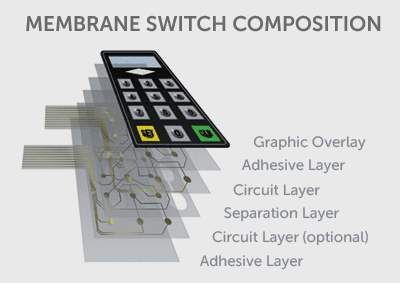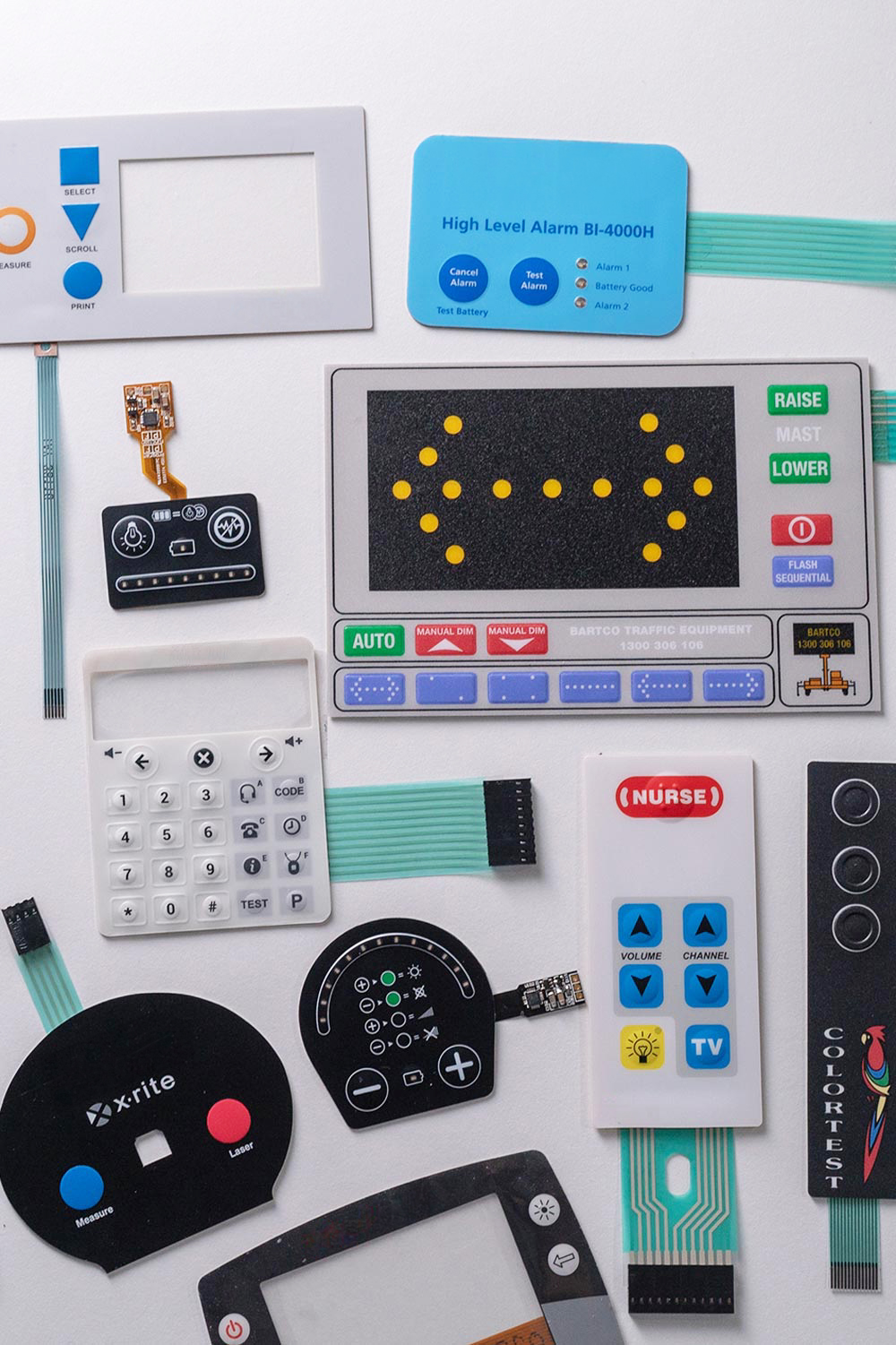Understanding the Durability and Versatility of a Membrane Switch
Understanding the Durability and Versatility of a Membrane Switch
Blog Article
Recognizing Membrane Layer Switches: The Trick to Dependable and sturdy Controls
Membrane changes represent an essential element of modern user interface design, mixing functionality with strength in numerous applications. These functional elements not only promote individual communication however are additionally crafted to stand up to the rigors of requiring environments, from medical gadgets to commercial machinery. Recognizing their construction, operation, and the myriad advantages they provide is vital for designers and developers alike. As we explore the ins and outs of membrane layer buttons, it becomes clear that their function in improving control systems is both profound and complicated, elevating inquiries concerning just how finest to take advantage of their capacities in future innovations.
What Are Membrane Switches?
Membrane layer switches are an advanced service in the realm of individual interface innovation, incorporating functionality and design flawlessly. These devices offer as an interface in between individuals and electronic systems, incorporating a number of components right into a compact style. Generally built from flexible, slim layers of materials, membrane layer buttons are developed to reply to touch, making it possible for users to connect with machinery and digital devices successfully.
The primary elements of a membrane switch consist of a published circuit layer, graphic overlay, and a spacer layer that prevents unplanned activation. The graphic overlay can be tailored to reflect brand name identity or customer choices, improving looks while making sure functionality. Membrane switches are frequently made use of in different applications, consisting of medical tools, consumer electronics, and commercial devices, owing to their resilience and resistance to ecological elements such as wetness and dust.
Among the essential advantages of membrane switches is their ability to stand up to wear and tear, making them optimal for high-traffic environments. Furthermore, they are lightweight and call for marginal space, permitting ingenious styles in product growth. On the whole, membrane changes stand for a efficient and useful choice for modern-day digital user interfaces, marrying innovation with user-centric style concepts.

Exactly How Membrane Switches Over Job
The operation of membrane changes hinges on an easy yet efficient system that equates user input into digital signals. When a user presses the button, the top layer warps, enabling a conductive component in the circuit layer to make call with a matching conductive pad on the bottom of the visuals overlay.
The design of membrane layer buttons can vary, yet they often include domes or tactile components to provide comments to the customer, enhancing the general experience. The products utilized in membrane buttons, such as polyester or polycarbonate, contribute to their toughness and resistance to environmental factors, consisting of moisture and dust. Moreover, the printed circuits are generally encapsulated, which protects them from wear and tear with time.

Benefits of Membrane Layer Buttons
One of the key benefits of membrane layer buttons is their versatility in layout, allowing them to be personalized to meet certain user needs and aesthetic requirements. This flexibility encompasses numerous markets, where various shapes, dimensions, and colors can be used to boost customer interaction and visual appeal.
In addition, membrane buttons are recognized for their durability. Created from durable products, they are resistant to dirt, dampness, and physical wear, which dramatically prolongs their lifespan compared to conventional mechanical switches. This longevity makes them especially appropriate for high-traffic settings and applications requiring longevity.

In addition, membrane buttons provide a streamlined profile, bring about a thinner style that can be integrated right into numerous devices without including mass. This function not just enhances the aesthetic allure yet also contributes to a more ergonomic product layout.

Applications of Membrane Buttons
Versatile and easy to use, membrane switches find applications across a wide variety of sectors, consisting of medical tools, consumer electronics, and commercial equipment. In the medical area, these switches are essential to tools such as diagnostic devices, patient surveillance systems, and infusion pumps, where integrity and convenience of cleaning are essential. Their capacity to maintain and withstand harsh settings functionality makes them suitable get more for such applications.
In customer electronics, membrane buttons are made use of in items like microwaves, washing machines, and remote controls - membrane switch. Their smooth have a peek at this website design enables instinctive interface, improving the general individual experience while supplying toughness and resistance to deterioration
Commercial tools likewise gains from membrane buttons, especially in control panels for machinery and automation systems. These switches supply protection against dirt and dampness, guaranteeing regular performance in difficult settings. Their adjustable attributes allow manufacturers to tailor them to specific operational demands, improving efficiency and performance.
Choosing the Right Membrane Switch
When picking a membrane switch, it is necessary to think about various aspects that affect efficiency and suitability for particular applications. The primary factors to consider include ecological problems, responsive comments, durability, and design specs.
First, analyze the operating setting; buttons subjected to dampness, chemicals, or extreme temperature levels call for specific materials to ensure long life and performance. Next, assess the need for tactile feedback. Relying on individual interaction, some applications might gain from a tactile response to verify activation, while others may choose a non-tactile style for aesthetic factors.
Longevity is one more critical aspect; membrane layer buttons should be developed to endure regular use, influences, and abrasion. Make certain the chosen button can endure the anticipated lifecycle, especially in high-usage scenarios.
Conclusion
In final thought, membrane changes offer as essential parts in the layout of long lasting and reputable control systems across different industries. The flexibility of membrane switches allows for customized options that meet particular functional needs, reinforcing their importance in modern-day technology.
Membrane layer switches represent a vital facet of modern-day user interface layout, blending functionality with resilience in various applications.Membrane switches are an innovative solution in the world of individual interface modern technology, combining performance and layout seamlessly. Generally built from adaptable, slim layers of materials, membrane buttons are developed to respond to touch, allowing users to engage with machinery and electronic tools effectively.
The layout of membrane layer switches can vary, however they frequently include domes or responsive elements to see page give responses to the user, enhancing the general experience.In conclusion, membrane layer switches offer as crucial elements in the design of dependable and long lasting control systems throughout numerous sectors.
Report this page